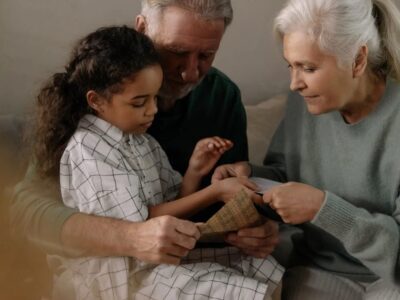Trusts
Trusts are particularly effective estate planning tools as they can have the dual effect of protecting your wealth and reducing your tax burden, although it is of the utmost importance that they are set up with the correct intention and to achieve a specific purpose (or set of purposes). A testamentary trust, which is the most commonly used trust in South Africa, can be set up through a valid Will for the purpose of housing assets and property bequeathed to a minor child until he reaches an age where he can manage the assets himself. This type of testamentary trust, referred to as a special trust Type B, is ideal for testator’s who want to avoid having their minor children’s inheritance being administered by the Guardian’s Fund in the event of their death. Type B trusts generally cease to exist on the occurrence of a pre-determined event such as when the youngest beneficiary reaches age 18. The income tax rates for Type B trusts are the same as those applicable to natural persons ranging from 18% to 45%, although this type of trust does not enjoy the same tax benefits as Type A trusts in the annual CGT exclusions and the primary residence exclusions.
If a testator has a special needs child or a child who through physical or mental incapacity is incapable of ever managing his affairs, he is able to set up what is referred to as a special trust Type A either as an inter vivos (living) trust or as a testamentary trust. Such a trust must be set up in terms of Section 6B (1) of the Income Tax Act in order to enjoy tax benefits that are not available to ordinary trusts. There is a strict set of criteria that must be met in order for a trust to qualify as a Type A trust, including that the beneficiary’s disability or incapacity must be medically diagnosed, must have been present for a period of at least 12 months, and must be an irreversible condition. Further, the trust must be set up for the sole benefit of the disabled person (or persons) and the trustees must not benefit from the trust. Further, where there are two or more beneficiaries to the trust, they need to be related. While normal trusts are taxed at the highest rate of 45%, Type A trusts are taxed as natural persons on a sliding scale of 18% to 45%. They also enjoy an annual CGT exclusion of R40 000 as well as the R2 million primary residence exclusion of the capital gain for CGT purposes.
Inter vivos trusts, which are set up during a person’s lifetime, are excellent vehicles for housing growth assets such as property and shares to ensure smooth transference to the next generation in a cost-effective manner, while at the same time protecting the assets from creditors. By transferring immoveable property, such as a family farm or holiday home intended for the use of multiple beneficiaries, into an inter vivos trust, a person can ensure that the growth in value of the property is contained within the trust entity and does not accrue to his personal estate. In doing so, estate duty and taxes are reduced – although this should not be the primary reason for setting up such a trust. Bear in mind that courts will give consideration to the primary intention of the trust founder when setting up the trust. In general, an inter vivos trust should only form part of an estate plan where the trust founder intends to keep the property or assets for a long period of time and for the benefit of successive generations.
Donations
Donations can be used effectively in conjunction with an inter vivos trust to reduce the value of your estate during your lifetime. By reducing the value of your estate, you will effectively reduce your estate duty liability while at the same time increasing the value of the trust. While donations are taxed at a flat rate of 20% up to R30 million, each individual taxpayer is permitted to make a donation, in cash or in kind, of R100 000 per year free of donations tax. This means that a couple can effectively donate an amount of R200 000 per year towards the family trust without attracting donations tax. However, it is always advisable that any donations are made as part of a carefully constructed estate plan to achieve a specific purpose. Bear in mind that the act of donation involves relinquishing control of an asset and decreasing your net asset value during your lifetime. Whatever is donated to your inter vivos trust falls under the control of the trustees and is no longer yours to administer, and the financial implications of such relinquishment should be considered in your broader financial and estate plan.
Business assurance
Many South Africans have a sizeable portion of their accumulated wealth invested in their businesses and, as such, one’s business interests should be taken into account when developing your estate plan. If you intend for the value of your business interests to be a source of income for your loved ones in the event of your death it is imperative that you put effective transference mechanisms in place. Should you die, you would likely want the remaining shareholders to purchase your shares in the business thereby ensuring that the proceeds of the share sales fall into your estate for the benefit of your loved ones. However, depending on the value of the business, the remaining shareholders may not be in a position to raise sufficient capital to purchase your shares, making business assurance an excellent tool for the succession of business interests. By taking out business assurance on the lives of the shareholders to the value of their respective shares, business partners can ensure that there is sufficient liquidity upon the death of one shareholder to enable the surviving shareholders to purchase his share. Bear in mind, however, that business assurance can be highly technical, and it is important to get the structuring of the business assurance and underlying buy and sell agreement correct in order to guarantee intended outcomes. Where the shareholders put typical buy-and-Sell assurance policies in place on each other’s lives the premiums will not be tax-deductible, although the proceeds of the respective policies will then not be taxed meaning the full amount will be paid to each of the surviving shareholders. Keep in mind that insurance policies are considered deemed property in a deceased estate, and to ensure that the proceeds of business assurance policy do not attract estate duty it is essential that the policy is correctly structured.
Living annuities
One of the many benefits of living annuities is that they make excellent estate planning tools and can facilitate the smooth transference of invested capital to one’s beneficiaries. Importantly, money invested in a living annuity does not form part of a deceased estate and therefore does not attract estate duty. Unlike other retirement funds, owners of living annuities have freedom to nominate beneficiaries – including trusts – to the annuity, thus ensuring that the nominated beneficiaries have immediate access to the funds in the event of death. Bear in mind that where no beneficiary has been nominated, the proceeds of the living annuity will be paid into the deceased estate but will not attract estate duty – although the executor has the right to charge a fee. Winding up a deceased estate can take anywhere between six months and a number of years, making living annuities an attractive estate planning mechanism, especially because it provides your beneficiaries with immediate options in respect of accessing the capital bequeathed to them. Your beneficiaries have the option to make a full withdrawal of the capital housed in a living annuity, although it is important for them to bear in mind that the capital will be taxed as per the retirement tax tables applicable to the deceased. If making a partial withdrawal, they have the option of transferring the balance to a living annuity in their own name. Alternatively, your beneficiaries can choose to maintain the living annuity in its current form, with the option of adjusting the underlying investments and draw down levels in accordance with their financial circumstances.
Have a great day.
Sue








